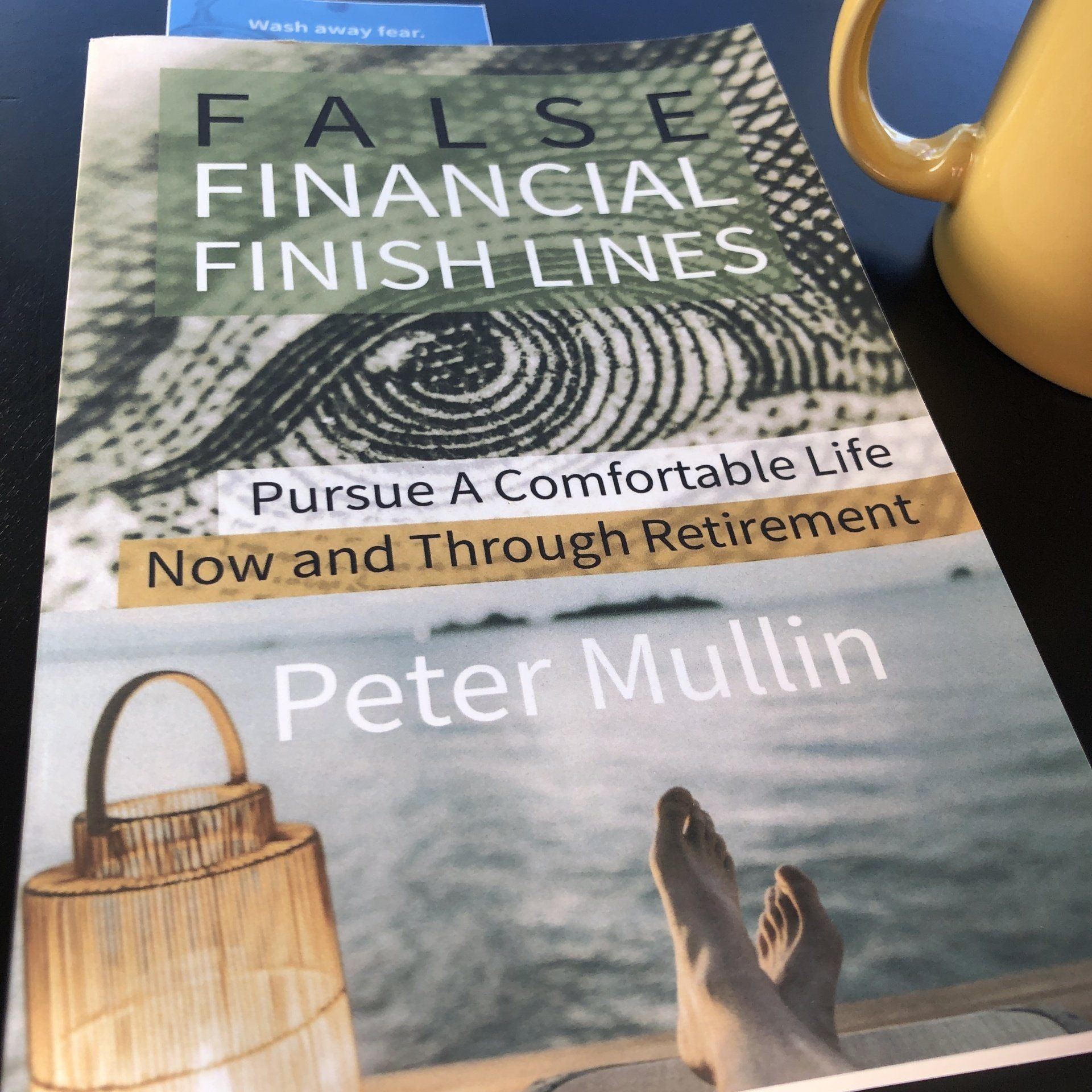2022 Stocks Road Ahead

February 3, 2022
Dear Valued Investor:
The calendar had barely flipped to 2022 and investors were reminded that even attractive long-term stock returns come with a cost: volatility. The S&P 500 Index fell nearly 10% from January 3 through January 27 amid fears that the Federal Reserve (Fed) will have to get a lot more aggressive to fight inflation, before staging a 4% rally over the last two days of the month to end January down 5%. After such a steady march higher in 2021, the dip may have caught some investors off guard.
For those whose anxiety levels may have risen a bit last week, here are some numbers that may provide reassurance:
- Even in positive years for the S&P 500, on average the index experiences a maximum peak-to-trough decline of 11%. This year’s max drawdown is now 9.8%.
- After a correction of 10-15%, the index has experienced an average one-year gain off the lows of 22% and has risen in 12 of the 13 one-year periods.
- The average stock market gain one year after the first Fed rate hike of an economic cycle has been 11%, with gains the past eight cycles dating back to 1983.
- When investor sentiment is most negative, as it was during the past two weeks based on the American Association of Individual Investors (AAII) investor sentiment survey, stocks have risen an average of 11% in the next year.
This data argues that stock investors should stay the course. But remember that gains in 2022 will likely be tougher to come by than in 2021. They may be more modest and happen later in the year, as is typical during midterm election years.
The good news is that an inflation peak may be near as the COVID-19 Omicron variant loses its punch. Slower, but still solid, economic growth this year will help cool inflation as Fed rate hikes take hold. We’re already seeing backlogs and bottlenecks start to clear. We expect more people to jump back into the labor force later this year, easing wage pressures. We may also get some help from lower oil prices, though that may have to wait for Russia-Ukraine tensions to die down.
These uncertainties make the road ahead for stocks tougher. But with U.S. consumers and businesses in excellent shape, the U.S. economy may grow 4% this year, well above the pace of the last decade. Corporate America is showing once again during fourth quarter earnings season that it is thriving with S&P 500 earnings poised to increase by more than 25% year-over-year.
Perhaps the stock market in 2022 will be like the exciting NFL playoff games played during the past two weekends—with a lot of back and forth between the bulls and the bears before the bulls grind out a hard-fought win late in the game.
Please contact me if you have any questions.
Sincerely,
Peter
Important Information
This material is for general information only and is not intended to provide specific advice or recommendations for any individual. There is no assurance that the views or strategies discussed are suitable for all investors or will yield positive outcomes. Investing involves risks including possible loss of principal. Any economic forecasts set forth may not develop as predicted and are subject to change.
References to markets, asset classes, and sectors are generally regarding the corresponding market index. Indexes are unmanaged statistical composites and cannot be invested into directly. Index performance is not indicative of the performance of any investment and do not reflect fees, expenses, or sales charges. All performance referenced is historical and is no guarantee of future results.
All data is provided as of February 2, 2022.
Any company names noted herein are for educational purposes only and not an indication of trading intent or a solicitation of their products or services. LPL Financial doesn’t provide research on individual equities.
All index data from FactSet.
This Research material was prepared by LPL Financial, LLC. All information is believed to be from reliable sources; however LPL Financial makes no representation as to its completeness or accuracy.
- Mullin's take on the "4% Retirement Rule"
- Navigate "Bad Portfolio Weather"
- Tips to Optimize Social Security







Articles and Assets
What are your Priorities?
Well it’s the end of the year. I just searched on Google for “market outlook 2018.” I came up with a little over 58-million “results.”
So should you be investing in stocks in 2018? The quick answer: It’s likely a prudent part of your portfolio. But it depends on your circumstances, right?
It’s apparently popular to throw your hat in the ring.
A mantra that you hear among disciplined professionals is to “stay the course.”
Then you hear “sell high, buy low.”
Who’s right?
The relief of a disciplined strategy is that it can be tailored to you. And tailor we think you should.
Yes, it’s possible that an investor may not utilize stocks in their portfolio at all. Or you may decide to go “all in” with a diversified stock portfolio.
(Side effects from tailoring a strategy may include increased confidence & persistence, apathy toward daily market reports, and increased focus on what really matters.)
Let’s begin with the “Why” of investing for you. Then you can request 15-minutes on the phone discuss your “how.”
So “Why Should You Invest”
Life changes and our “why” of investing ought to transform with life. Some invest for sport – they like the risk/reward of investing – they’re in it for the thrill. I don’t hang with this crowd.
Most of us ought to invest for things we want. Our money & our goals are serious. By investing in a diversified portfolio we can pursue things we want.
1. Living A Comfortable Retirement: Retirement is a noun. It’s up to you to really design and live a retirement that reflects you.
2. Purchasing a Home: Home is a place to live. It can take a down payment.
3. Passing an Inheritance on to Family:
4. Student Loan Shield: This idea is important for many Millennial graduates. Student loans can dominate your budget. But instead of accelerating those payments, what if you paid your required payments, and then invested the additional money that you were going to pay against your loan balance?
5. Emergency Reserves: You probably have read that it’s prudent to keep a relative healthy amount of cash in your checking/savings. Once you’ve achieved that, then you can consider investing additional funds. Go a step further and consider a non-retirement account for you and your house. You can spend this on cars, vacations or use it just as described in #4.
The Dow Jones has seen positive results, so far, in 2017. It’s unusual and sort of uncomfortable as the independent financial advisor. Why is it uncomfortable?
What would sting & linger longer? Finding $20 in the parking lot? Or finding a $20 parking fine on your windshield?
We’ve been finding a lot of metaphorical “$20’s” (i.e. “positive results”) in our portfolios this year. So the second we find a parking fine (or a few in a row) we’ll be sure to ask if stocks are still the right place to park our money.
Complacency can work against us, Dear Clients. Just keep recalling your long-haul strategy and your “why” of investing.
***
Peter Mullin is an independent financial advisor registered through LPL Financial. He lives in Rogers, MN with his family. He was born and raised in St. Cloud, MN. Mullin Wealth Management is located in Waite Park, MN.
The opinions voiced in this material are for general information only and are not intended to provide specific advice or recommendations for any individual.
Investing involves risk including loss of principal.
There is no guarantee that a diversified portfolio will enhance overall returns or outperform a non-diversified portfolio. Diversification does not protect against market risk.
All performance referenced is historical and is no guarantee of future results.
All indices are unmanaged and may not be invested into directly. No strategy assures success or protects against loss.







